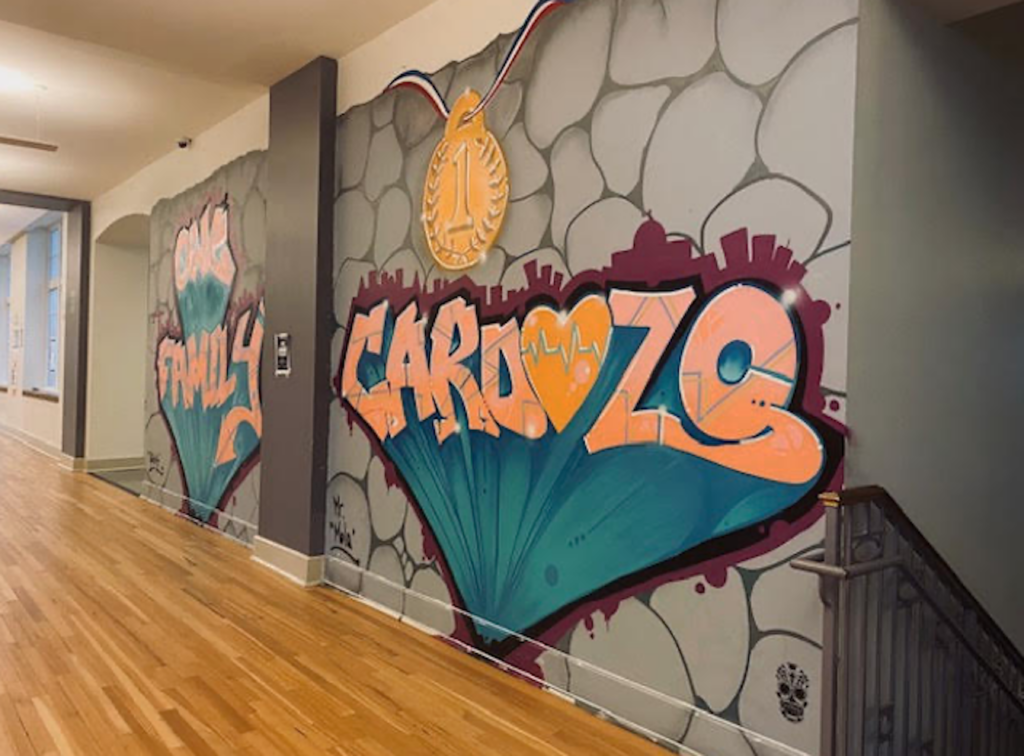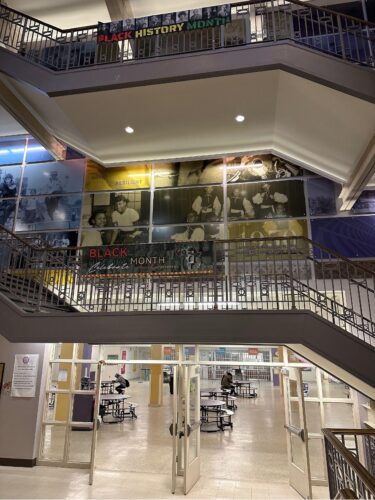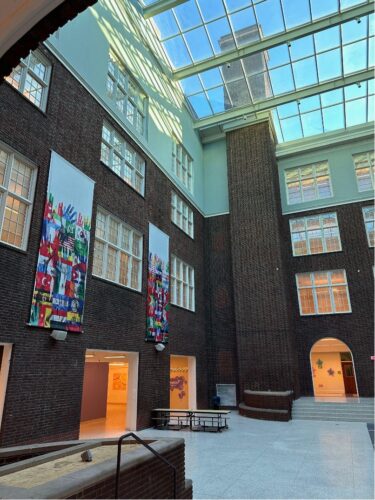Cardozo Educational Campus is now Children Incorporated’s longest affiliated site in Washington, D.C. It is also our only affiliated site in Ward 1. This ward has a rich architectural and cultural heritage. It is a true melting pot, with immigrants from all over the world. It is the modern heart of the city’s Hispanic/Latino community. It is also home to many of the city’s African American and Asian American small businesses. This ward has 12 historic districts, and its landmarks include Rock Creek Park and the National Zoo.
One of the architectural treasures is the Cardozo Education Campus. It began its historic renovation in 2011, which included exterior renovation, roofing, HVAC, ADA improvements, technology design and sustainable design. It can house 1100 students.
About Cardozo
Cardozo Education Campus currently serves about 625 students from sixth to 12th grade. It has a middle school, an International Academy, and a comprehensive high school. Students come from many backgrounds, from those born in Washington, D.C., to students from Central and South America. This diverse population makes Cardozo very special. The school’s demographics are 49% black, 46% Hispanic/Latino, 3% Asian, 1% white, and 1% other.
There are AP classes, Army JROTC, sports, and arts and cultural clubs and activities. One of the most interesting things about Cardozo is its TransSTEM Academy. Students receive hands-on technical training in electricity, electronics, and electromechanical technology. There is also a pre-engineering module where students can explore aeronautics, biomechanics, and other applied math science occupations and skills.
The children who are enrolled in our sponsorship program are the ones who need the most support. This includes providing them with clothing, school supplies, hygiene products and food.
Cardozo has two Communities In Schools site coordinators, Jovan and Florangel. After arriving at the school for our meeting, Kristen Walthall and I heard from both Jovan and Florangel, who explained that CIS plans ahead when it comes to running our sponsorship program. Starting every March, they conduct needs assessments with the families. Over summer break, they analyze the results and discuss any adjustments to current initiatives or the creation of new ones.
Meeting with our coordinators
At Cardozo, their two biggest goals are currently in-seat attendance and academics. The students have many stressors and competing priorities. Some must care for younger siblings. Some are essentially homeless and they couch-surf with friends and relatives. Regular school attendance isn’t always a priority. Jovan and Florangel offer incentives for the students to come to school each day. They also work on parent engagement. The children who are enrolled in our sponsorship program are the ones who need the most support. This includes providing them with clothing, school supplies, hygiene products and food.
During our meeting, Robert,* a sixth grader, was brought in to meet us as a student body representative. This was no doubt due to his outgoing personality. Robert didn’t have a shy bone in his body. He had no problem chatting with Kris and me, and it was lovely to meet him as one of our sponsored children.
After Robert returned to class, it was time to tour this beautifully restored school that offers so much for the children. We toured the International Academy hall first. It was founded in 2014 through a partnership with D.C. Public Schools and the International Network for Public Schools (INPS) in NYC. According to the school’s website, “The academic model is based on decades of proven, research-based instructional approaches designed to work with recently arrived immigrant students. Students are grouped into teams and travel as a cohort throughout the day. Through the International Academy, students experience a complete integration of language and content development, heterogeneous grouping and ongoing collaboration, strategic use of students’ native/dominant language when working with peers, as well as the intentional bridging of the student’s native language and the target language of English.” We also saw classrooms, the gymnasium, and the beautiful interior courtyard of the school.
In Florangel’s words
After our tour ended, Florangel told Kris and I more about how our program helps children at Cardozo:
“Some of the challenges that Cardozo has faced are receiving students from Venezuela. Many students live at shelters and have recently arrived in the United States. Welcoming new migrant students has been challenging, but not impossible, in connecting each student to the right services. Students can connect to the health clinic and receive clothes and shoes from our partners, like Children Incorporated.”
Florangel also shared a sweet story about two of our sponsored children:
Seth and Lewis* are both newly arrived in the United States. They both have parents who requested resources immediately so Seth and Lewis could feel comfortable attending school. One of the items they both received was a coat. The students and their families have never experienced the cold weather, so they had expressed concern about how the weather would be during the wintertime. Seth likes to play soccer, so we were able to provide soccer clothes. Lewis enjoys dancing, so we provided new shoes for him. Many more students and parents have expressed gratitude for things they cannot afford or help while working to save money.
*Names changed to protect the children.
***
How do I sponsor a child with Children Incorporated?
You can sponsor a child in one of three ways: call our office at 1-800-538-5381 and speak with one of our staff members; email us at sponsorship@children-inc.org; or go online to our sponsorship portal, create an account, and search for a child in that is available for sponsorship.



